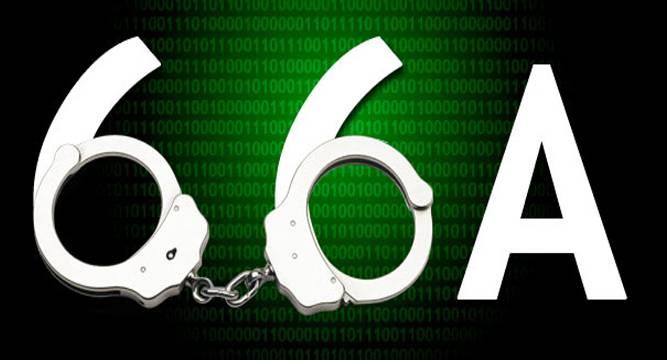Almost 4 Years After Being Struck Down by SC, Section 66A Continues to Be Used All Over India

Image Courtesy: News Nation
March 2019 will mark the four-year anniversary of the landmark judgement made by a two-judge bench of the Supreme Court in the case Shreya Singhal v. Union of India, where Section 66-A of the Information Technology Act 2001 was struck down. The provision, which was inserted through an amendment act in 2008, criminalised sending ‘offensive messages’ online. The Supreme Court struck it down because of the vagueness that surrounds the word ‘offensive’.
The Court said in the judgement, “[E]very expression used (in Section 66-A) is nebulous in meaning. What may be offensive to one may not be offensive to another. What may cause annoyance or inconvenience to one may not cause annoyance or inconvenience to another.”
It also said, “[T]he mere causing of annoyance, inconvenience, danger etc., or being grossly offensive or having a menacing character are not offences under the Penal Code at all… The petitioners are right in saying that Section 66A in creating an offence against persons who use the internet and annoy or cause inconvenience to others very clearly affects the freedom of speech and expression of the citizenry of India at large in that such speech or expression is directly curbed by the creation of the offence contained in Section 66A.”
In a paper, “Section 66A and other legal zombies,” the lawyers Abhinav Sekhri and Apar Gupta demonstrate “how Section 66-A continues to cause second order harms to individuals exercising their freedom of speech”. The paper says, “Almost mirroring one of these low budget cult classics, it appears that the industry of human intellect is being pushed into dark corners, and hushed silence to avoid the inexorable march of a dumb, bloodthirsty creature.”
According to the data used by the lawyers to write their paper, there have been at least 45 Section 66-A cases between January and September, 2018. The authors said in the paper that they believe that the real number of cases is much greater than this, as online databases do not have an exhaustive index of the Section 66-A cases.
The paper also mentions that the National Crime Records Bureau (NCRB) has stopped publishing data on Section 66-A in the Crime in India reports, starting from the year 2017. By doing this, “the government eliminated a data point for checking the continued forays of this legal zombie”. The paper said, “Interestingly, absence of Section 66-A from the NCRB data correlates to the increased incidence of the use of Section 66 (computer related offences) and Section 67 (offence of online obscenity).” The authors have said that there are cases where Section 66 and Section 67 are being used interchangeably with Section 66-A, even though they have clearly distinct legal objectives.
The paper demonstrates “how Section 66-A continues to cause second order harms to individuals exercising their freedom of speech.” The authors have mentioned in the conclusion, “We hope that this paper not only focuses attention on necessary legal and administrative reforms to prevent the continued abuse of not only Section 66-A, but other legal zombies still wandering through the Indian legal system.”
Get the latest reports & analysis with people's perspective on Protests, movements & deep analytical videos, discussions of the current affairs in your Telegram app. Subscribe to NewsClick's Telegram channel & get Real-Time updates on stories, as they get published on our website.
























